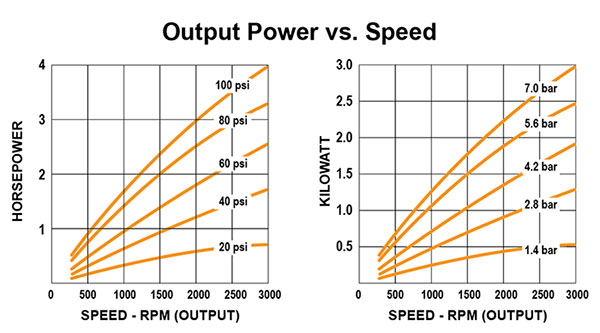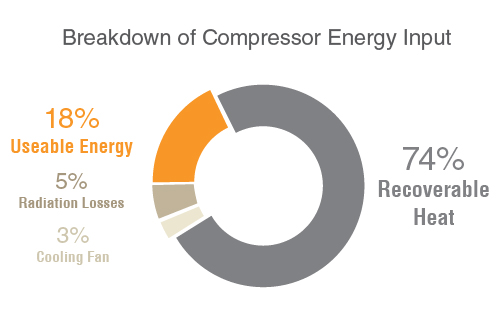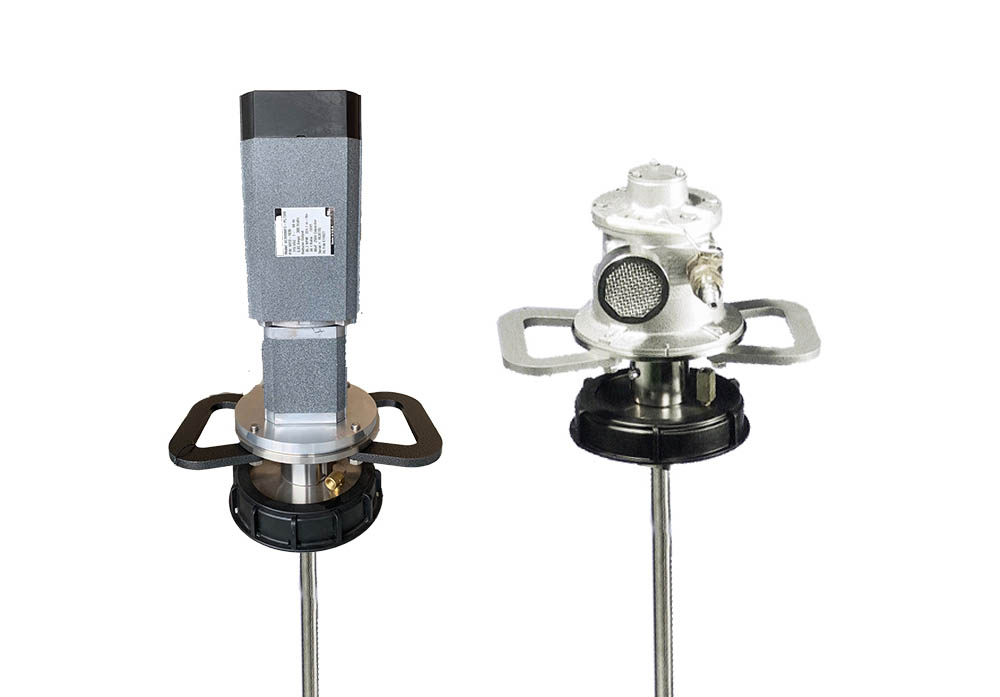5 FACTORS FOR OPTIMAL MOTOR SELECTION
Air or electric?
End users often don’t understand all the factors to consider when making the decision to use an air motor vs. an electric motor in their mixer configuration. While a mixer’s motor type is largely determined by the plant environment, the value of considering several important factors is substantial when each consideration point is thoroughly understood.
A proper understanding of torque, energy efficiency, variable speed, mixing environment, and mixer weight are all significant and valuable considerations to discuss when selecting an appropriate motor. In a real-world example, our engineers leveraged these factors when working with a leading car manufacturer, and the decision to make a wholesale change within their production environment not only enhanced plant performance, but improved efficiency and ultimately reduced operating costs.
Motor Selection: 5 Factors to Consider
When selecting and sizing a mixer for an application, major considerations include the size and type of motor required to deliver the necessary output power and torque to achieve the desired result. Other factors to consider include the motor’s efficiency within the confines of the plant environment. The following points should all be considered before making a final determination
1. Applied Torque
As we discussed in a previous article, torque is the most important and accurate measure in mixing.
Air motors have a distinct advantage in this area because they dynamically load torque. Essentially, an air motor adjusts its torque output to match the necessary torque requirement of the application.
The most common air motor specified by Dynamix is a rotary vane motor. Rotary vane motors are simple in design and are usually available in small sizes 1/10 to 10 hp, with a maximum operating pressure of 100 psi. This type of air motor uses stored energy in the form of compressed air, which enters the sealed motor chamber and exerts pressure against the vanes of a rotor. This action causes the rotor to turn at a high speed.
The compressibility of the air is the key to the dynamic torque loads available through a rotary vane motor. As the mixer is opposed by the viscosity of an application, the vanes are slowed, thus compressing the air. This compression increases the applied torque. The motor continues to provide increased torque until it stalls, and then it maintains its stalled condition without damaging the motor. As the load is decreased, an air motor will increase speed and decrease torque to match the load.
The following chart details the relationship between output power and speed in a typical air motor:

The horsepower, and subsequently speed, will both increase as air pressure increases.
An electric motor is designed to run consistently at a given speed. If the motor is overloaded, one of two things will happen; either a breaker will relieve the load, or the motor will fail prematurely and require replacement. When an air motor is overloaded, the pressure will simply increase until it bypasses, which does not damage its motor.
2. Energy Efficiency
The biggest drawback of air motors is that they are less efficient than their electric counterparts. This is evident from the fact that an electric motor drives the air compressor, which supplies the air to drive the air motor. Energy input (air pressure) is lost at various points in the pipes, elbows, and fittings, which can drop the efficiency of the system to less than 20% of a direct drive electric motor.
The following chart provides a typical breakdown of these energy input losses:

In addition to a reduction in efficiency, one must also consider the cost differences between running an air motor and an electric motor. Based on operating the same sized unit for 5,000 hours / year at a power cost of $0.05 / kWh, it will cost $1,300 more per year to operate the air motor.
3. Variable Speed Control
One of the benefits of air motors is that they can achieve variable speeds by adjusting the air control valve. With an electric motor, there are variable speed control options available, but they substantially increase the price of the motor being offered.
That being said, variable speed control should not be considered a replacement for proper mixer sizing, and should only be employed when it is required by the application or process. When a mixer is correctly optimized for a specific product, the results will be predictable and optimal. There is no replacement for proper engineering and design.
4. Hazardous Environments
Air motors, by design, are intrinsically non-sparking because they use compressed air as their energy source. In addition to being a much more economical option than their explosion-proof electrical counterparts, they can also operate safely in wet or corrosive environments.
Electric explosion-proof motors have a tight fit between mating parts to ensure the integrity of the explosion-proof enclosure. This can lead to an accumulation of moisture inside the motors due to condensation. Care should be used when selecting an electric explosion-proof motor, especially when installed outdoors and on intermittent duty.
5. Mixer Weight
The weight of a mixer is largely determined by the motor. This is particularly important with the portable class of mixers, such as our DMX Series and ITM Series mixers, because they are often designed to be lifted and carried to various locations in a plant. Air motors are more lightweight than their electrical counterparts.
Air motors also develop more horsepower per pound and cubic inch than most electric motors of standard design. Again, this is largely due to the fact that the power is not actually generated at the air motor. Thus electric motors in the fractional HP range can be 10 pounds heavier than the air equivalent.
Making the Decision
To summarize, an optimal decision regarding motor type can be provided once all factors are considered and are weighed against the merits of the following:
- Torque and power requirements
- Desired efficiency based on the operating environment
- Weight limitations of the mounting orientation
- Presence of combustible or flammable materials
Contact Dynamix Agitators Today
Request a free quote by filling in an online form or call us at 604-670-6964 for all other inquiries about our agitators and mixers.




